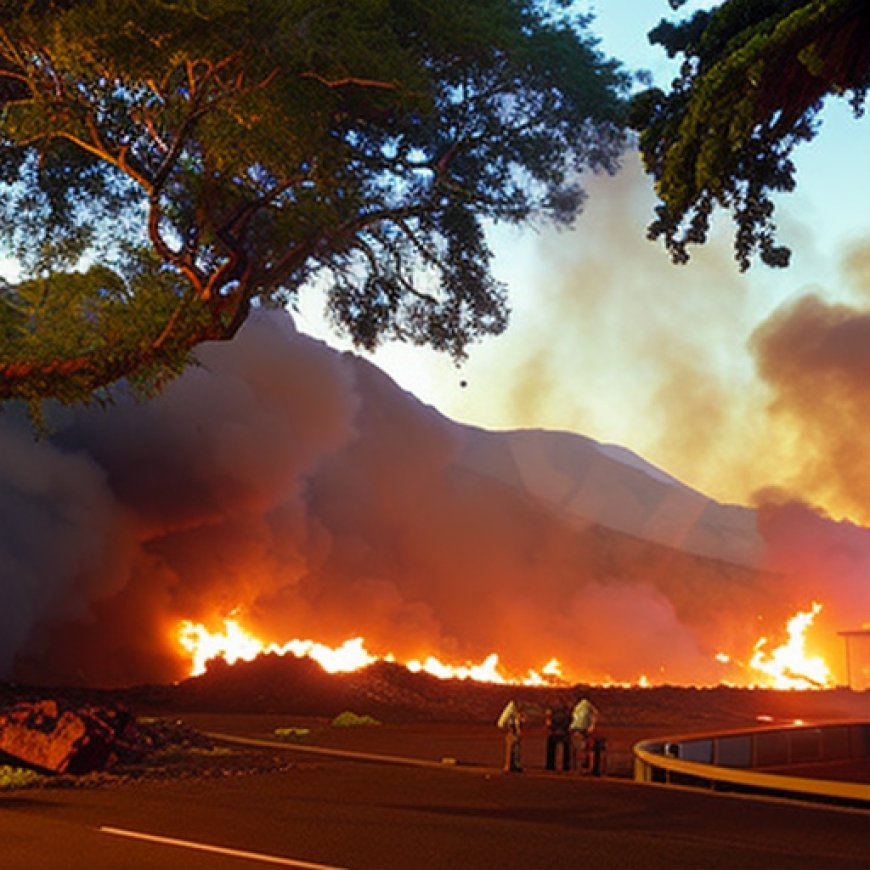The Conversation: Maui’s deadly wildfires burn through Lahaina – it’s a reminder of the growing risk to communities that once seemed safe
The Conversation: Maui's deadly wildfires burn through Lahaina ... Press Herald


Wildfires in Lahaina, Hawaii
Introduction
On August 8 and 9, 2023, wildfires fueled by powerful winds swept through Lahaina, Hawaii, leaving a charred and smoldering landscape across the tourist town. At least 99 people lost their lives in the fires, and many others had to be rescued by the U.S. Coast Guard after seeking refuge in the ocean. The dry grasses and strong winds, influenced by Hurricane Dora passing to the south, increased the risk of wildfires in both Maui’s west coast and the Big Island of Hawaii.
Impact of Wildfires
In the United States, most fires are suppressed before they pose a threat to communities. However, the strong winds in Lahaina prevented helicopters from being deployed on the first day of the fires, forcing firefighters to battle the blazes from the ground. In response to the emergency, Lt. Gov. Sylvia Luke issued a declaration and activated the National Guard for assistance.
Increasing Risk of Wildfires
Wildfires have become a growing risk in many areas of the U.S. Over the past two decades, approximately 21.8 million Americans have found themselves living within 3 miles of a large wildfire. Among them, nearly 600,000 individuals had their homes directly exposed to the fire. This number has more than doubled from 2000 to 2019.
Causes of Increased Exposure
Contrary to popular belief, the population growth in high-risk areas only accounts for a small portion of the increase in wildfire exposure. Instead, three-quarters of this trend can be attributed to intense fires that spread uncontrollably and encroach on existing communities.
Climate Change and Wildfires
Climate change plays a significant role in the occurrence of wildfires. Hot and dry weather conditions create dry fuel that is easily ignited. Recent research has shown that almost all of the increase in burned areas in California can be attributed to anthropogenic climate change.
High-Risk Areas and Wildfire Exposure
A study conducted by climate scientists analyzed the boundaries of over 15,000 large wildfires across the lower 48 states and examined population distribution data. While population growth in the wildland-urban interface contributes to increased exposure, it only accounts for about one-quarter of the overall increase. The remaining three-quarters can be attributed to fires encroaching on existing communities, putting lives at risk.
Reducing the Risk
Reducing greenhouse gas emissions is crucial in slowing down warming trends and mitigating the intensity of wildfires. However, communities must also develop response plans, reduce human ignitions of wildfires, and improve zoning and building codes to prevent fires from becoming destructive.
SDGs, Targets, and Indicators
1. Which SDGs are addressed or connected to the issues highlighted in the article?
- SDG 11: Sustainable Cities and Communities
- SDG 13: Climate Action
- SDG 15: Life on Land
2. What specific targets under those SDGs can be identified based on the article’s content?
- SDG 11.5: By 2030, significantly reduce the number of deaths and the number of people affected and substantially decrease the direct economic losses relative to global gross domestic product caused by disasters, including water-related disasters, with a focus on protecting the poor and people in vulnerable situations.
- SDG 13.1: Strengthen resilience and adaptive capacity to climate-related hazards and natural disasters in all countries.
- SDG 15.1: By 2020, ensure the conservation, restoration, and sustainable use of terrestrial and inland freshwater ecosystems and their services, in particular forests, wetlands, mountains, and drylands, in line with obligations under international agreements.
3. Are there any indicators mentioned or implied in the article that can be used to measure progress towards the identified targets?
- Number of deaths and people affected by wildfires
- Economic losses caused by wildfires
- Resilience and adaptive capacity to climate-related hazards and natural disasters
- Conservation, restoration, and sustainable use of terrestrial ecosystems
Table: SDGs, Targets, and Indicators
| SDGs | Targets | Indicators |
|---|---|---|
| SDG 11: Sustainable Cities and Communities | Target 11.5: By 2030, significantly reduce the number of deaths and the number of people affected and substantially decrease the direct economic losses relative to global gross domestic product caused by disasters, including water-related disasters, with a focus on protecting the poor and people in vulnerable situations. | – Number of deaths and people affected by wildfires – Economic losses caused by wildfires |
| SDG 13: Climate Action | Target 13.1: Strengthen resilience and adaptive capacity to climate-related hazards and natural disasters in all countries. | – Resilience and adaptive capacity to climate-related hazards and natural disasters |
| SDG 15: Life on Land | Target 15.1: By 2020, ensure the conservation, restoration, and sustainable use of terrestrial and inland freshwater ecosystems and their services, in particular forests, wetlands, mountains, and drylands, in line with obligations under international agreements. | – Conservation, restoration, and sustainable use of terrestrial ecosystems |
Behold! This splendid article springs forth from the wellspring of knowledge, shaped by a wondrous proprietary AI technology that delved into a vast ocean of data, illuminating the path towards the Sustainable Development Goals. Remember that all rights are reserved by SDG Investors LLC, empowering us to champion progress together.
Source: pressherald.com

Join us, as fellow seekers of change, on a transformative journey at https://sdgtalks.ai/welcome, where you can become a member and actively contribute to shaping a brighter future.







